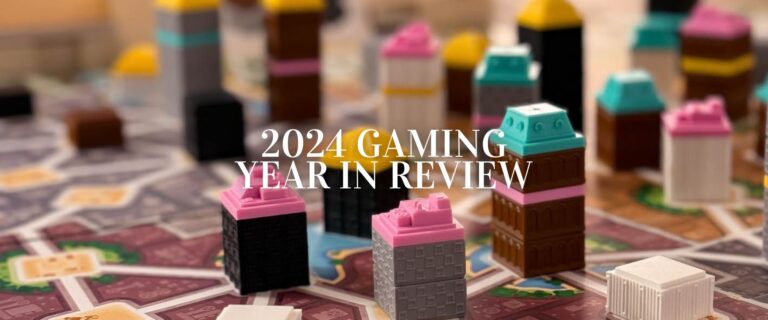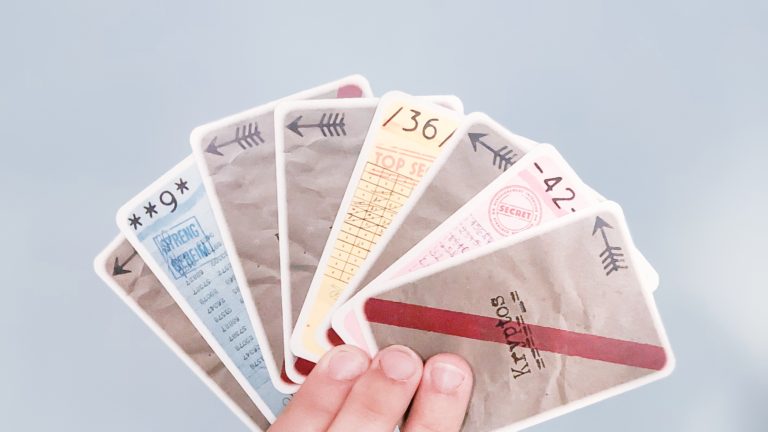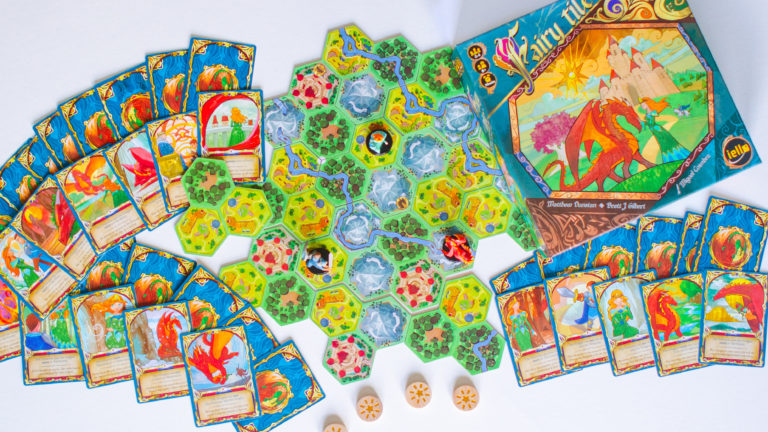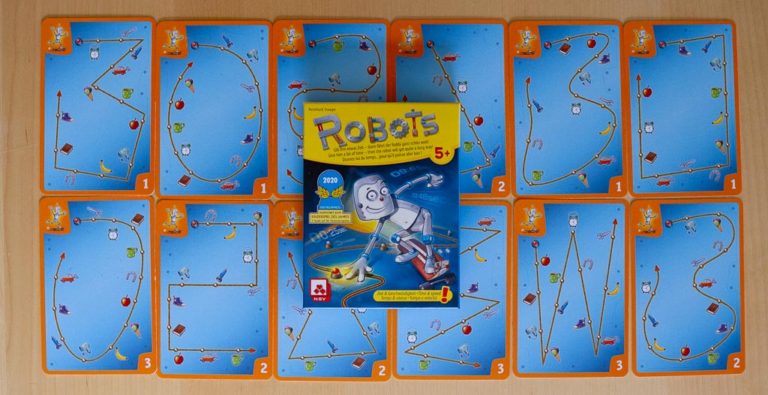Imagine this:
You’re trapped in the creepy library of a sorcerer who is out to get you. The only way to find the exit is to follow the clues found in images provided to you by a Grimoire. This magic book will try to point you in the right direction, giving you the details you need to figure out which doors to take as you and your group work together, searching for your escape.
However, among you is a traitor, working to lead you to your doom.
Can you work together to avoid defeat and find the exit of the library?
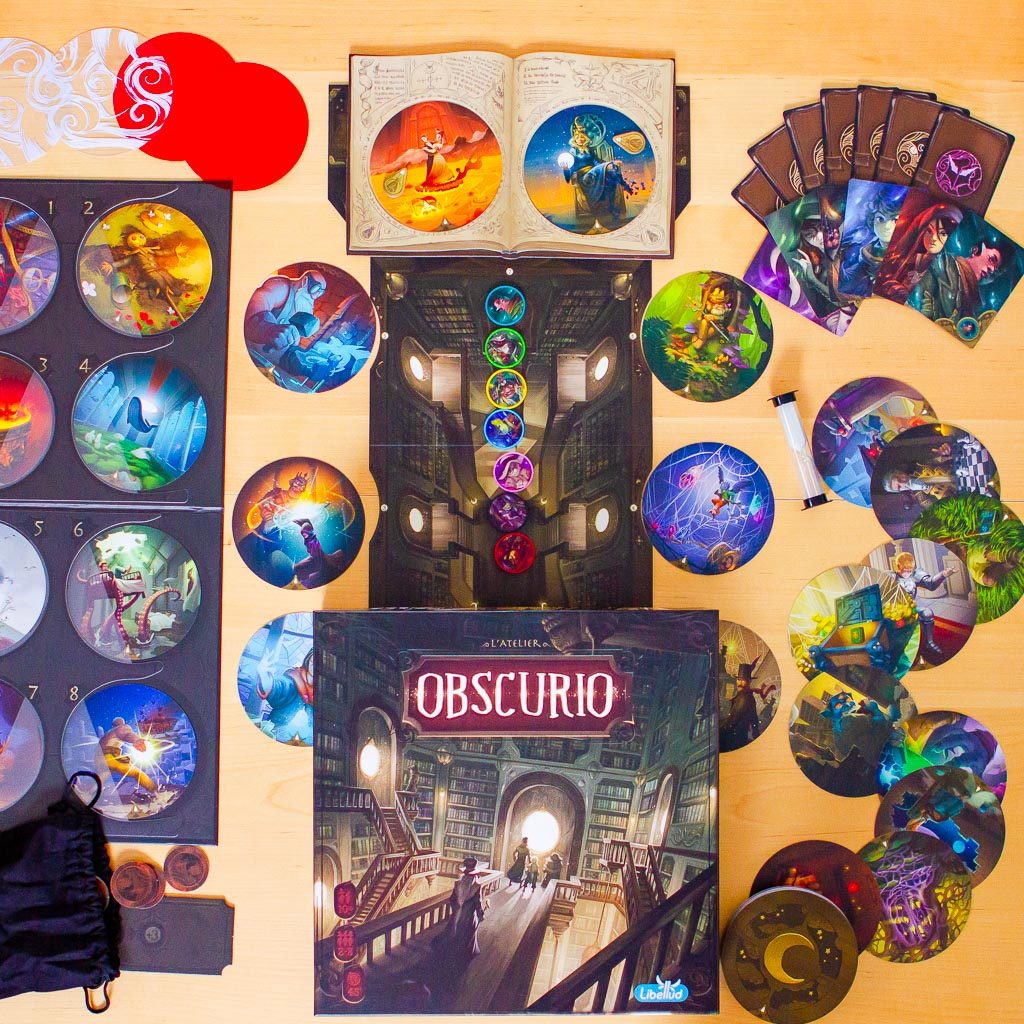
How Do You Play Obscurio?
Assign Roles:
Grimoire – Known Role
At the start of each game, choose one person to act as the Grimoire. They will play the magical book that will give clues during the game. This role will be known by all of the players and they will know who the traitor is. During the game they are not allowed to speak. The Grimoire wins if the Wizards win.
Wizards – Hidden Role
The majority of players are Wizards. Wizards win if the group escapes the Library.
Traitor – Hidden Role
One player is secretly working against the group. This role remains hidden from the Wizards and is known by the Grimoire. They win if the Grimoire/Wizards do not escape the library and all the Cohesion tokens are gone.
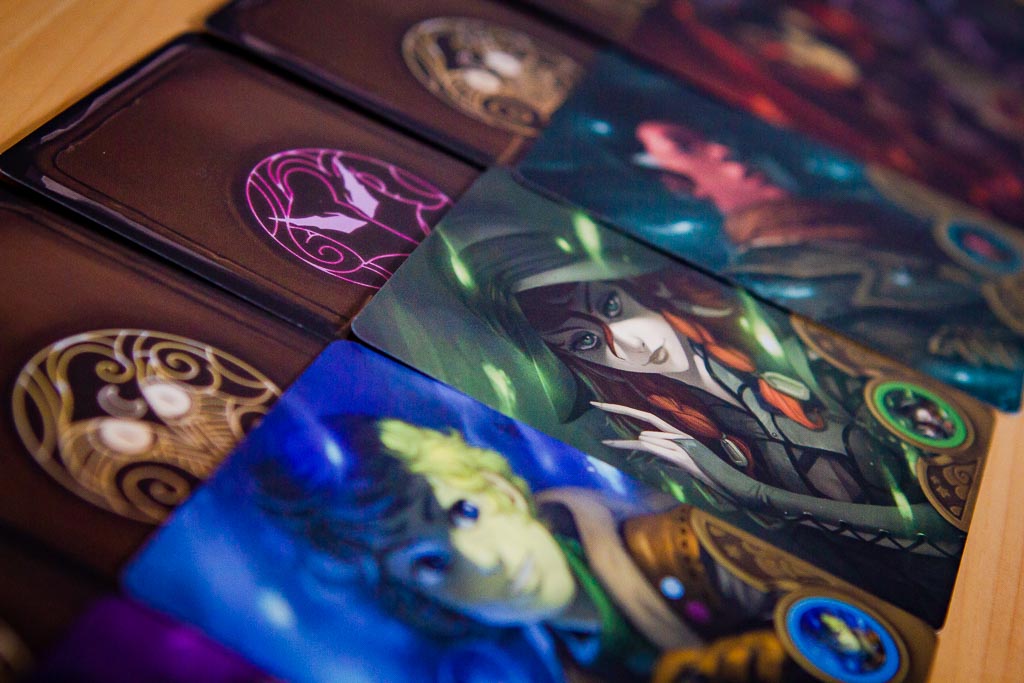
Game Structure
Obscurio is played over a number of rounds until the Wizards and Grimoire reach the end of the room track, escaping the library to win or if the last Cohesion Token is removed from the board and the Traitor wins.
To escape, Wizards must find the correct door card (an exit) that the Grimoire is leading them to each round. Only one wizard must find the correct door in order to move the progress token forward on the room track. To do this, the group follows 5 steps each round.
Step 1: Round Setup
Draw 1 trap token each round plus any additional you accrued during the previous turn. Trap tokens are the obstacles in each room that try to prevent the Wizards from escaping.
Step 2: Prepare the Riddle
The Grimoire draws an illusion card from the deck and secretly looks at it. This card is the exit card the Wizards must identify to move to the next room.
Then the Grimoire draws 2 other illusion cards and places them face up into the slots of the magnetic book.
Using the 2 Butterfly markers, the Grimoire points at anything on the 2 cards that they think will help the wizards identify the Exit card, following any trap token restrictions as necessary.
Once the Grimoire is satisfied hand the book to the other players so they can all see it and discuss.
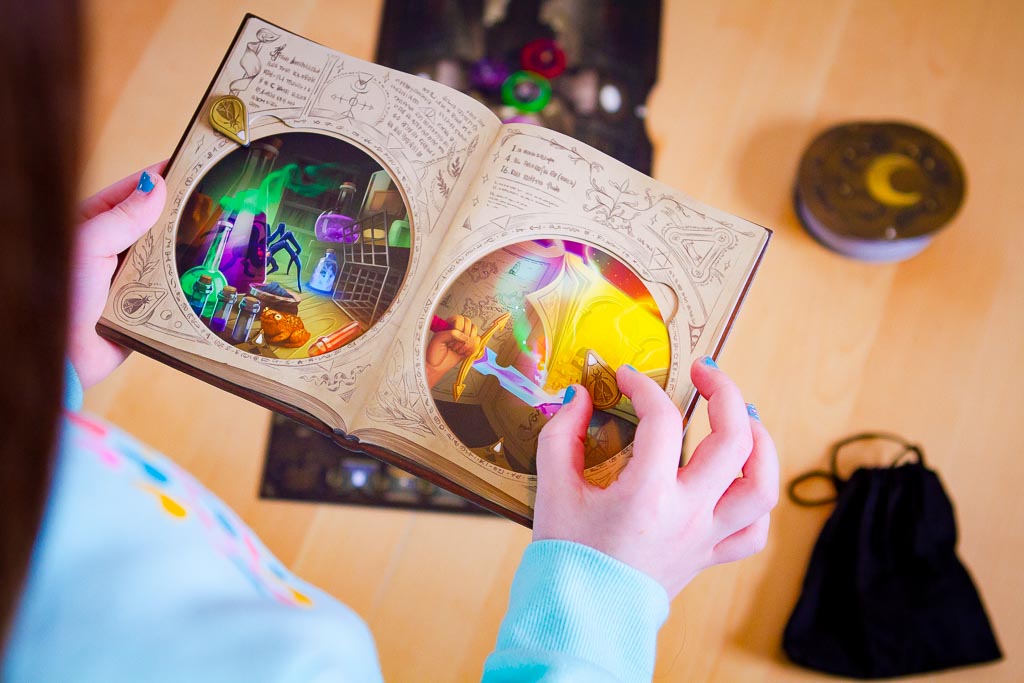
Step 3 – Traitor Cards
The Grimoire tells the Wizards to close their eyes, then asks the Traitor to open theirs.
The Traitor is then showed the card holder, containing 8 numbered illusion cards. Hoping to confuse the Wizards, they will choose one or two cards (if desired) they think looks like a potential Exit card based on the clues given by the Grimoire. Each card chosen is immediately replaced.
These cards are placed face down on top of the Exit Card.
Everyone then opens their eyes.

Step 4 – Choosing the Door
Adding to the Exit card and any cards chosen by the Traitor, the Grimoire draws more illusion cards until there are six cards, shuffles them, and hands them to the Wizards.
They will flip them over one by one and put them around the slots on the board. As soon as the first card is flipped over, the sand timer is turned over on the Time Track.
The Wizards now discuss which card they think is the exit. When a player thinks they know the proper Exit card, they place their wizard character token in front of that door.
Wizards do not have to all choose the same door and can split up to increase their chances of finding the right door. However, one cohesion token will be removed for each wizard that chose the wrong door.
Once the wizards are happy with their chosen door(s) they tell the Grimoire to stop the timer. However, if the timer runs out on the last space on the time track, the Grimoire tells the group to stop and they lose cohesion tokens and do not advance that round. The more time it takes the Wizards to choose their door, the more trap tokens they will accrue the next round.
The correct exit door is then revealed. If at least one person chose this door, the group advances one space on the progress track.
Each Wizard that picked a wrong door takes 1 cohesion token and places it on their character card.
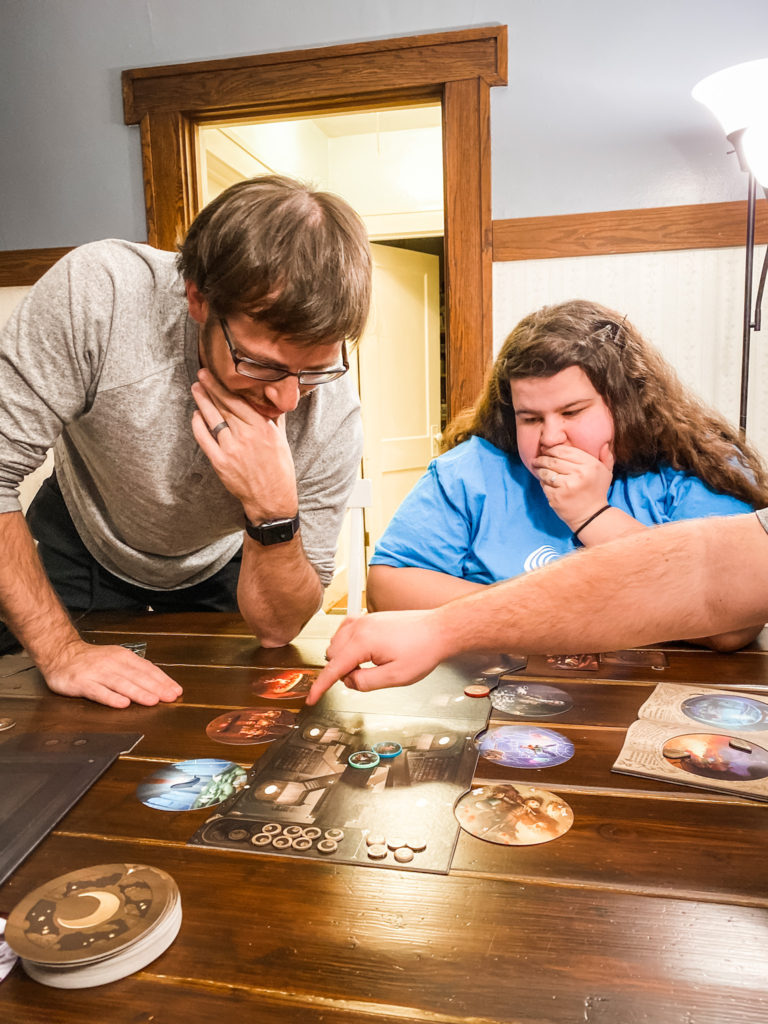
Step 5 – End of Round
If no one has won, reset the board and start the next round at step 1.
Making an Accusation
Once the last cohesion token is taken from the left side of the cohesion pool, the Wizards begin to hunt for the Traitor.
The Wizards have 1 minute to discuss, then point to who they think the Traitor is. The accused player reveals their Loyalty card. Each falsely accused Wizard causes the group to lose 2 Cohesion tokens.
If the Traitor is not accused and there are still cohesion makers, you’ll perform another accusation phase.
If the Traitor is exposed and there are still Cohesion tokens, you’ll complete the next turn, however, the Traitor will only be able to take part in phase 3 until the end of the game.
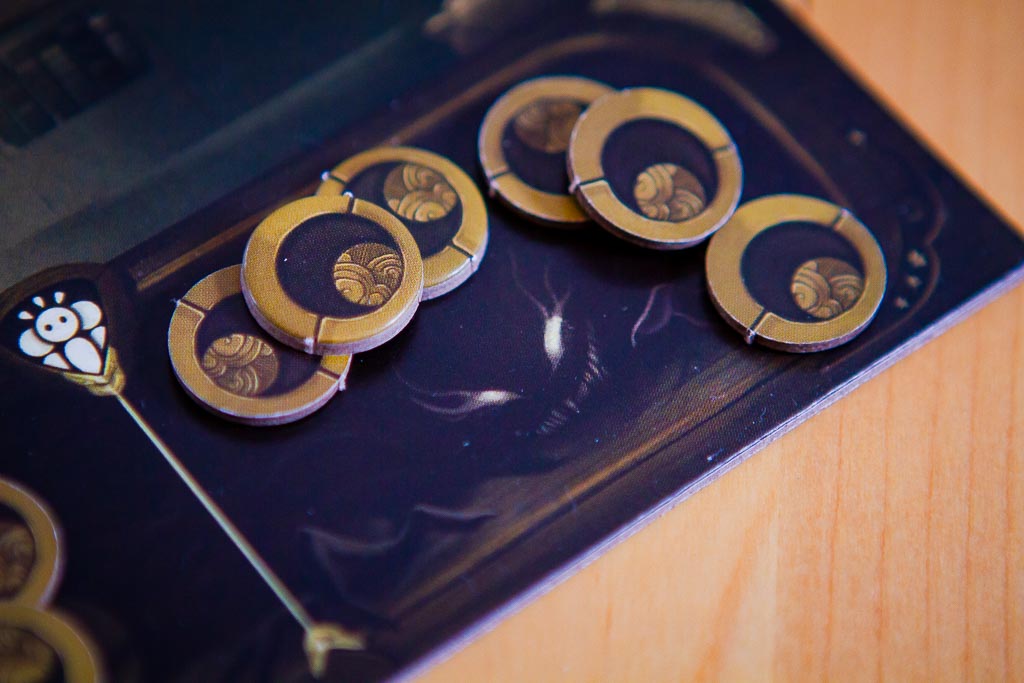
What do we think?
What a fresh and exciting take on the genre! It’s like the best of the art driven card games and the social deduction games had a baby and created Obscurio.
I have enjoyed playing every role in this game. Honestly, it’s hard to pick a favorite! Each time I’m the Grimoire I think, “Ooh! This is the most fun!” Then next I’ll play one of the group trying to decipher the clues and think, “No, this is the most fun! Also, you’re the traitor clearly!” Yet then when I’m the traitor, sure enough I think I’m having the most fun again!
The art is just fantastic. The perfect amount of fantasy and creepy without ever being too much. It sets the tone really well for the game and it’s easy to get lost in the stories the images so naturally tell.

With a game like this, you might be concerned about the element of luck that is involved for the Grimoire. When you’re responsible for giving the clues and you’re just randomly drawing two cards to use, isn’t it a bit tricky if they don’t work?
There is a tad bit of luck, sure. But honestly, it never ceases to amaze me in games like this, or others like it such as Detective Club (another great original in this genre) how well you can use literally almost any card to point your group in the right direction.
It’s also so fun when you flip over the cards for the doors and realize just how well the other cards now suddenly match your perfectly clever clues! How do they do that!?
This is also what makes it so fun for the traitor. These cards are all so fun to interpret and everyone sees them differently. Perhaps the butterfly token is pointing at one object and one person sees it as a clue to the color, another the shape, a third the object itself, while a fourth sees it from an entirely different perspective! Finding ways to understand how everyone thinks and communicate effectively with one another is always a recipe for a fun time.
You might be thinking, “Actually, Kelsey, effectively communicating isn’t a recipe for fun with my group because some people like to take on the role of Alpha Gamer and dictate the moves of others.” Don’t worry, there’s a fix for that! Obscurio has a couple of really nice elements that limit the amount of arguing and alpha gaming that can arise in games like this!
First of all, you never have to listen to what another player is saying. Everyone gets to choose whatever door they want. No one can make you go somewhere you don’t want to go. (And oh how lovely it feels when they try and it turns out they were wrong all along!)
Secondly, the communication and discussion over the cards never drags out too long because the longer you take, the more penalties you accrue for the next round so you want to be quick about it an not fuss on.

Thoughts on Fit for Families
This is a great family game. Because it is an illustration driven game, you can include kids who can’t read yet or who struggle to read and interpret text. Kids can play this as easily as adults. If you have a child that is handling games in that 8+ age range, they will most likely have a lot of fun with this game.
The only difficulty I would say would be if they were the traitor or the grimoire. Those roles can put a bit of pressure on younger kids so for the first couple games I might make it so that they were part of the general group or play without the traitor role.
Which reminds me: This game is super fun without the traitor too! For lower player counts, 2 and 3 players can play simply by omitting the traitor role. We have played this way and it is still a great time. What we do however is we just pass the grimoire book around from round to round so everyone can have a chance to give and receive clues. If you’re going to play with the traitor, I feel that it shines best with 5 or more players. That way there are enough people for them to hide amongst. It works at four, but then there’s the traitor and two other guessers so it’s pretty easy to suss out who it is most times.
That being said, once the traitor is found out there’s still stuff they can do by utilizing the card booklet to help trick the other players into choosing the wrong door. A really smart design element of the game to avoid full player elimination!
Summary
This game gets two enthusiastic thumbs up from us!
If you are fans of illustration driven games, communication challenges, or social deduction party games, you’ll definitely want to give Obscurio a look! With beautiful art and smart game play this is a hit with almost any group and perfect for families!
Thank you so much to Asmodee North America for sending us a copy of Obscurio for review.
As always, our thoughts and opinions are our own.
Game Info:
Title: Obscurio
Players: 2-8
Designer: L’Atelier
Artist: Xavier Collette
Publisher: Libellud


